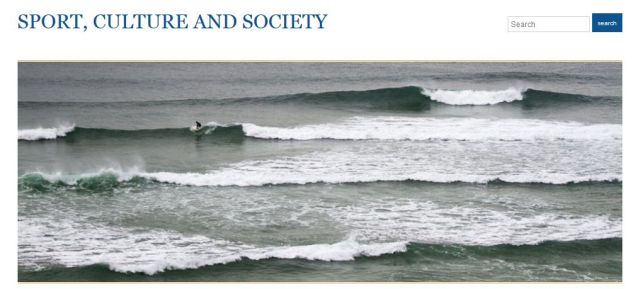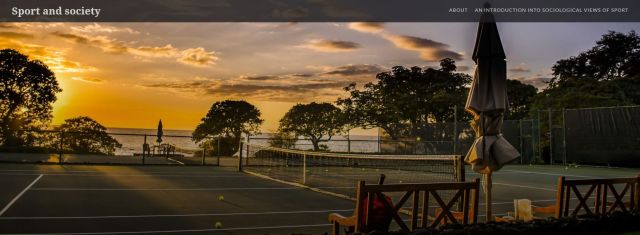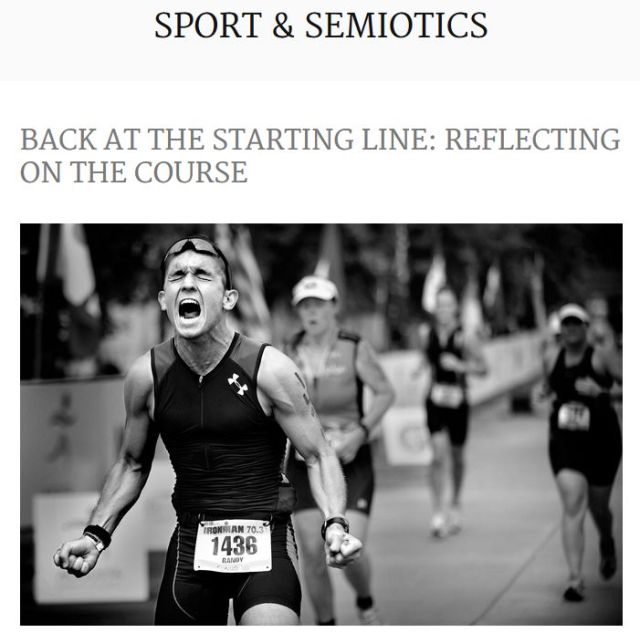Last October I was very happy to accept the invitation of Nynke Kruiderink (ICT in Education at the College and Graduate School of Social Sciences) to help assist professor Ramón Spaaij (Special Chair of Sociology of Sport) with a new feature of his course Sport, Culture & Society (MA Sociology): the use of blogs – each student establishing and developing his or her own – to discuss the course topics. The aim of the online blog journal expected from each student was – while applying «sociological perspectives and debates on sport to ‘real-world’ experiences and examples» – «to engage with other people’s ideas in order to develop, test and communicate your own in a (semi-)public forum […] learn about the writing conventions that structure critical engagement of public issues in online media». Access and fair use of online sources for an academic assignment, and netiquette practices also belong to the blog’s aims (source: ‘Course manual’).
Provided with scholarly literature on the use of blogs in higher education (the titles are listed below) and based on my own experience both as a blogger and as a librarian teaching information literacy, I chose online privacy and the (additional) reasons for blogging as main issues to address in the presentation I was asked to deliver to the students at the course kick-off.
No matter the topic or the online platform, and all the more so if writing in an academic or educational context, one of the greatest challenges posed to students is the permanent traceability of information shared on the internet. While such powerful search tools as the Wayback Machine may be aptly used to retrieve information long thought lost, it’s precisely the somehow apparently indelible memory of internet which has gradually been attracting the attention of both digital/privacy rights activists and European legislators: the debate on the ‘Right to be forgotten’ (see the 2012 EU-factsheet) and the recent rejection of the so called ‘safe harbour scheme’ by the Court of Justice (thanks to Austrian student Max Scherms’ action) are cases in point I used to illustrate the issue of online privacy.
As for the reasons for blogging, additional to it being a course assignment (the students’ case) or a tool to share information with library users (my case): among those mentioned in the literature (Sim & Hew, 2010), it was the purpose of the blog as «learning journal or knowledge log» which mostly resonated with my own blogging experience and its welcome (side-)effects, i.e. seeing how a number of topics that I had often been addressing provided a coherent and ever-developing picture of my main professional interests and concerns. To put it in the words of another article on blogs and higher education (Freeman & Brett, 2012): «…interest-driven blogging practice, defined as writing regularly about ideas that are personally meaningful, as they emerge. When students wrote timely posts, they were able to maintain and improve on the level of reflection evident in their blog posts. The prompts were worded in a way that created the potential for writing about personally meaningful ideas, an important factor that supported blogging practice and encouraged topic resonance with the students’ own interests».
The ‘technical’ side of creating and maintaining a blog (including making it ‘private’ and licensing its content via Creative Commons) was also part of my presentation, but proved in the end less needed, thanks both to the variety of support resources available at blog-platforms (see WordPress as example) and to students’ familiarity with online tools.
Attractive examples of the blogs produced by the MA-students of the UvA-course Sport, Culture & Society – in terms of both creative approach to blogging and insight in the course topics – follow here below: professor Spaaij provided the brief introductory notes to each example.
Elinor Gittins https://notagadget.wordpress.com/. Demonstrates how hyperlinks and visual images can be effectively and aesthetically incorporated in a blog.
Iris van de Ven https://ivandeven.wordpress.com/. A beautifully designed blog that illustrates how the interaction between author and audience – through comments posted by other students – can enhance students’ critical engagement and collective reflection on the course topics.
Joris Bastiaan https://sportsemiotics.wordpress.com/. One of a number of blogs written by the students that succeeded at applying complex sociological concepts and theories to the lived experience of sport in a way that complemented and augmented the classroom activities and discussion.
Blogs in higher education: selected titles
– Farmer, B., Yue, A., & Brooks, C. (2008). Using blogging for higher order learning in large cohort university teaching: A case study. Australasian Journal of Educational Technology, 24, 123-136. Retrieved from http://ajet.org.au/index.php/AJET/article/view/1215/441.
– Freeman, W., & Brett, C. (2012). Prompting authentic blogging practice in an online graduate course. Computers & Education, 59, 1032-1041. http://dx.doi.org/10.1016/j.compedu.2012.03.019.
– Jimoyiannis, A., & Angelaina, S. (2012). Towards an analysis framework for investigating students’ engagement and learning in educational blogs. Journal of Computer Assisted Learning, 28, 222-234. http://dx.doi.org/10.1111/j.1365-2729.2011.00467.x.
– Sim, J. W. S., & Hew, K. F. (2010). The use of weblogs in higher education settings: A review of empirical research. Educational Research Review, 5, 151-163. http://dx.doi.org/10.1016/j.edurev.2010.01.001.
Yueh, H. P., Lin, W., & Lu, T. (2014). Users’ perceptions of blog functions: educational vs personal use. Program: electronic library and information systems, 48, 41-52. http://dx.doi.org/10.1108/PROG-10-2012-0058.




